Automorphic Forms, Reprensentations, and L-Functions. Contains sections on Automorphic representations and L-functions as well as Arithmetical algebraic geometry and L-functions.Complex Manifolds and Hyperbolic Geometry: II Iberoamerican Congress on Geometry, January 4-9, 2001, Cimat, Guanajuato, Mexico Mexico) Iberoamerican Congress on Geometry 2001 (Guanajuato, William Harvey, Sevin Recillas-PishmishThis volume derives from the second Iberoamerican Congress on Geometry, held in 2001 in Mexico at the Centro de Investigacion en Matematicas A.C., an internationally recognized program of research in pure mathematics. The conference topics were chosen with an eye toward the presentation of new methods, recent results, and the creation of more interconnections between the different research groups working in complex manifolds and hyperbolic geometry. This volume reflects both the unity and the diversity of these subjects. Researchers around the globe have been working on problems concerning Riemann surfaces, as well as a wide scope of other issues: the theory of Teichmuller spaces, theta functions, algebraic geometry and classical function theory. Included here are discussions revolving around questions of geometry that are related in one way or another to functions of a complex variable.There are contributors on Riemann surfaces, hyperbolic geometry, Teichmuller spaces, and quasiconformal maps. Complex geometry has many applications - triangulations of surfaces, combinatorics, ordinary differential equations, complex dynamics, and the geometry of special curves and jacobians, among others. In this book, research mathematicians in complex geometry, hyperbolic geometry and Teichmuller spaces will find a selection of strong papers by international experts.Moduli of Abelian Varieties Allan Adler, Sundararaman RamananThis is a book aimed at researchers and advanced graduate students in algebraic geometry, interested in learning about a promising direction of research in algebraic geometry. It begins with a generalization of parts of Mumford's theory of the equations defining abelian varieties and moduli spaces. It shows through striking examples how one can use these apparently intractable systems of equations to obtain satisfying insights into the geometry and arithmetic of these varieties. It also introduces the reader to some aspects of the research of the first author into representation theory and invariant theory and their applications to these geometrical questions.Homogeneous Manifolds With Negative Curvature Robert Azencott, Edward N. WilsonTopics in Combinatorial Group Theory Gilbert BaumslagCombinatorial group theory is a loosely defined subject, with close connections to topology and logic. With surprising frequency, problems in a wide variety of disciplines, including differential equations, automorphic functions and geometry, have been distilled into explicit questions about groups, typically of the following kind: Are the groups in a given class finite (e.g., the Burnside problem)? Finitely generated? Finitely presented? What are the conjugates of a given element in a given group? What are the subgroups of that group? Is there an algorithm for deciding for every pair of groups in a given class whether they are isomorphic or not? The objective of combinatorial group theory is the systematic development of algebraic techniques to settle such questions. In view of the scope of the subject and the extraordinary variety of groups involved, it is not surprising that no really general theory exists. These notes, bridging the very beginning of the theory to new results and developments, are devoted to a number of topics in combinatorial group theory and serve as an introduction to the subject on the graduate level.Automorphic Forms, Representations, and L-Functions: Symposium in Pure Mathematics. Volume XXXIII Part 1 Armand Borel, W. CasselmanContains sections on Reductive groups, representations, Automorphic forms and representations.Algèbre: Chapitre 8 N. BourbakiCe huitième chapitre du Livre d'Algèbre, deuxième Livre des Éléments de mathématique, est consacré à l'étude de certaines classes d'anneaux et des modules sur ces anneaux.
Il couvre les notions de module et d'anneau noethérien et artinien, ainsi que celle de radical. Ce chapitre décrit également la structure des anneaux semi-simples. Nous y donnons aussi la définition de divers groupes de Grothendieck qui jouent un rôle universel pour les invariants de modules et plusieurs descriptions du groupe de Brauer qui intervient dans la classification des anneaux simples.
Une note historique en fin de volume, reprise de l'édition précédente, retrace l'émergence d'une grande partie des notions développées.
Ce volume est une deuxième édition entièrement refondue de l'édition de 1958.Seminaire Bourbaki Nicolas BourbakiCharacters and Automorphism Groups of Compact Riemann Surfaces Thomas BreuerThe author uses modern methods from computational group theory and representation theory to treat this classical topic of function theory. He provides classifications of all automorphism groups up to genus 48. The book also classifies the ordinary characters for several groups, arising from the action of automorphisms on the space of holomorphic abelian differentials of a compact Reimann surface. This book is suitable for graduate students and researchers in group theory, representation theory, complex analysis and computer algebra.Theta Functions Bowdoin 1987 Me.) Summer Research Institute on Theta Functions (1987 Brunswick, Robert C. Gunning, Leon EhrenpreisBook by Summer Research Institute on Theta Functions (1987 Brunswick, Me.)Theta Functions, Bowdoin 1987 Me.) Summer Research Institute on Theta Functions (1987 Brunswick, Robert C. Gunning, Leon EhrenpreisDuring his long and productive career, Salomon Bochner worked in a variety of different areas of mathematics. This four part set brings together his collected papers, illustrating the range and depth of his mathematical interests. The books are available either individually or as a set.Solitons, Geometry and Topology: On the Crossroad V. M. Buchstaber, S. P. NovikovThis collection contains articles reflecting the most recent activity in topology and mathematical physics presented at the S. Novikov Seminar held in Moscow. Papers in the volume are devoted to problems in geometry, topology, and mathematical physics, including applications of topology to physical problems. Such a combination is a long-standing tradition of the seminar, which originated in 1965.Complex Geometry of Groups: January 5-11, 1998, Olmue, Chile Angel Carocca, Victor Gonzalez-Aguilera, Rubi E. RodriguezThis volume presents the proceedings of the I Iberoamerican Congress on Geometry: Cruz del Sur held in Olmue, Chile. The main topic was 'The Geometry of Groups: Curves, Abelian Varieties, Theoretical and Computational Aspects'. Participants came from all over the world. The volume gathers the expanded contributions from most of the participants in the Congress. Articles reflect the topic in its diversity and unity, and in particular, the work done on the subject by Iberoamerican mathematicians. Original results and surveys are included on the following areas: curves and Riemann surfaces, abelian varieties, and complex dynamics. The approaches are varied, including Kleinian groups, quasiconformal mappings and Teichmuller spaces, function theory, moduli spaces, automorphism groups, algebraic geometry, and more.Lectures on Lie Groups and Lie Algebras Roger W. Carter, Ian G. MacDonald, Graeme B. SegalThree of the leading figures in the field have composed this excellent introduction to the theory of Lie groups and Lie algebras. Together these lectures provide an elementary account of the theory that is unsurpassed. In the first part, Roger Carter concentrates on Lie algebras and root systems. In the second Graeme Segal discusses Lie groups. And in the final part, Ian Macdonald gives an introduction to special linear groups. Graduate students requiring an introduction to the theory of Lie groups and their applications should look no further than this book.Simple Groups of Lie Type Roger W. CarterNow available in paperback—the standard introduction to the theory of simple groups of Lie type. In 1955, Chevalley showed how to construct analogues of the complex simple Lie groups over arbitrary fields. The present work presents the basic results in the structure theory of Chevalley groups and their twisted analogues. Carter looks at groups of automorphisms of Lie algebras, makes good use of Weyl group (also discussing Lie groups over finite fields), and develops the theory of Chevalley and Steinberg groups in the general context of groups with a (B,N)-pair. This new edition contains a corrected proof of the simplicity of twisted groups, a completed list of sporadic simple groups in the final chapter and a few smaller amendments; otherwise, this work remains the classic piece of exposition it was when it first appeared in 1971.Differential Geometry and Complex Analysis: A Volume Dedicated to the Memory of Harry Ernest Rauch I. Chavel, H.M. FarkasThis volume is dedicated to the memory of Harry Ernest Rauch, who died suddenly on June 18, 1979. In organizing the volume we solicited: (i) articles summarizing Rauch's own work in differential geometry, complex analysis and theta functions (ii) articles which would give the reader an idea of the depth and breadth of Rauch's researches, interests, and influence, in the fields he investigated, and (iii) articles of high scientific quality which would be of general interest. In each of the areas to which Rauch made significant contribution - pinching theorems, teichmiiller theory, and theta functions as they apply to Riemann surfaces - there has been substantial progress. Our hope is that the volume conveys the originality of Rauch's own work, the continuing vitality of the fields he influenced, and the enduring respect for, and tribute to, him and his accom plishments in the mathematical community. Finally, it is a pleasure to thank the Department of Mathematics, of the Grad uate School of the City University of New York, for their logistical support, James Rauch who helped us with the biography, and Springer-Verlag for all their efforts in producing this volume. Isaac Chavel . Hershel M. Farkas Contents Harry Ernest Rauch - Biographical Sketch. . . . . . . . VII Bibliography of the Publications of H. E. Rauch. . . . . . X Ph.D. Theses Written under the Supervision of H. E. Rauch. XIII H. E. Rauch, Geometre Differentiel (by M. Berger) . . . . . . . .Geometry for the Classroom C.Herbert Clemens, Michael A. ClemensIntended for use in college courses for prospective or in-service secondary school teachers of geometry. Designed to give teachers broad preparation in the content of elementary geometry as well as closely related topics of a slightly more advanced nature. The presentation and the modular format are designed to incorporate a flexible methodology for the teaching of geometry, one that can be adapted to different classroom settings. The basic strategy is to develop the few fundamental concepts of elementary geometry, first in intuitive form, and then more rigorously. The rest of the material is then built up out of these concepts through a combination of exposition and "guided discovery" in the problem sections. A separate volume including the solutions to the exercises is also available.Representations and Characters of Finite Groups M. J. CollinsRepresentation theory and character theory have proved essential in the study of finite simple groups since their early development by Frobenius. The author begins by presenting the foundations of character theory in a style accessible to advanced undergraduates that requires only a basic knowledge of group theory and general algebra. This theme is then expanded in a self-contained account providing an introduction to the application of character theory to the classification of simple groups. The book follows both strands of the theory: the exceptional characteristics of Suzuki and Feit and the block character theory of Brauer and includes refinements of original proofs that have become available as the subject has grown.Sphere Packings, Lattices and Groups John Conway, Neil J. A. SloaneThe third edition of this definitive and popular book continues to pursue the question: what is the most efficient way to pack a large number of equal spheres in n-dimensional Euclidean space? The authors also examine such related issues as the kissing number problem, the covering problem, the quantizing problem, and the classification of lattices and quadratic forms. There is also a description of the applications of these questions to other areas of mathematics and science such as number theory, coding theory, group theory, analogue-to-digital conversion and data compression, n-dimensional crystallography, dual theory and superstring theory in physics. New and of special interest is a report on some recent developments in the field, and an updated and enlarged supplementary bibliography with over 800 items.Atlas of Finite Groups: Maximal Subgroups and Ordinary Characters for Simple Groups John Horton ConwayThis atlas covers groups from the families of the classification of finite simple groups. Recently updated incorporating correctionsNOTAS DE GEOMETRIA DIFERENCIAL DE CURVAS Y SUPERFICIE ANTONIO F. ET AL. COSTAMirror Symmetry and Algebraic Geometry David A. CoxMirror symmetry began when theoretical physicists made some astonishing predictions about rational curves on quintic hypersurfaces in four-dimensional projective space. Understanding the mathematics behind these predictions has been a substantial challenge. This book is the first completely comprehensive monograph on mirror symmetry, covering the original observations by the physicists through the most recent progress made to date. Subjects discussed include toric varieties, Hodge theory, Kähler geometry, moduli of stable maps, Calabi-Yau manifolds, quantum cohomology, Gromov-Witten invariants, and the mirror theorem.Tores et variétés abéliennes complexes Olivier DebarreQuantum Fields and Strings: A Course for Mathematicians Pierre Deligne, Pavel Etingof, Daniel S. Freed, Lisa C. Jeffrey, David Kazhdan, John W. Morgan, David R. Morrison, Edward WittenIdeas from quantum field theory and string theory have had considerable impact on mathematics over the past 20 years. Advances in many different areas have been inspired by insights from physics.
In 1996-97 the Institute for Advanced Study (Princeton, NJ) organized a special year-long program designed to teach mathematicians the basic physical ideas which underlie the mathematical applications. The purpose is eloquently stated in a letter written by Robert MacPherson: "The goal is to create and convey an understanding, in terms congenial to mathematicians, of some fundamental notions of physics ... [and to] develop the sort of intuition common among physicists for those who are used to thought processes stemming from geometry and algebra."
These volumes are a written record of the program. They contain notes from several long and many short courses covering various aspects of quantum field theory and perturbative string theory. The courses were given by leading physicists and the notes were written either by the speakers or by mathematicians who participated in the program. The book also includes problems and solutions worked out by the editors and other leading participants. Interspersed are mathematical texts with background material and commentary on some topics covered in the lectures. These two volumes present the first truly comprehensive introduction to this field aimed at a mathematics audience. They offer a unique opportunity for mathematicians and mathematical physicists to learn about the beautiful and difficult subjects of quantum field theory and string theory.Quantum Fields and Strings: A Course for Mathematicians Pierre DeligneIdeas from quantum field theory and string theory have had considerable impact on mathematics over the past 20 years. Advances in many different areas have been inspired by insights from physics.
In 1996-97 the Institute for Advanced Study (Princeton, NJ) organized a special year-long program designed to teach mathematicians the basic physical ideas which underlie the mathematical applications. The purpose is eloquently stated in a letter written by Robert MacPherson: "The goal is to create and convey an understanding, in terms congenial to mathematicians, of some fundamental notions of physics ... [and to] develop the sort of intuition common among physicists for those who are used to thought processes stemming from geometry and algebra."
These volumes are a written record of the program. They contain notes from several long and many short courses covering various aspects of quantum field theory and perturbative string theory. The courses were given by leading physicists and the notes were written either by the speakers or by mathematicians who participated in the program. The book also includes problems and solutions worked out by the editors and other leading participants. Interspersed are mathematical texts with background material and commentary on some topics covered in the lectures. These two volumes present the first truly comprehensive introduction to this field aimed at a mathematics audience. They offer a unique opportunity for mathematicians and mathematical physicists to learn about the beautiful and difficult subjects of quantum field theory and string theory.Seminaire sur les Singularites des Surfaces: Centre de Mathematiques de l'Ecole Polytechnique, Palaiseau 1976-1977 M. Demazure, H. Pinkham, B. TeissierHolomorphic Functions and Moduli I: Proceedings of a Workshop held March 13-19, 1986 D. Drasin, C.J. Earle, F.W. Gehring, I. Kra, A. MardenThe Spring 1986 Program in Geometric Function Theory (GFT) at the Mathematical Sciences Research Institute (MSRI) brought together mathe maticians interested in Teichmiiller theory, quasiconformal mappings, Kleinian groups, univalent functions and value distribution. It included a large and stimulating Workshop, preceded by a mini-conference on String Theory attended by both mathematicians and physicists. These activities produced interesting results and fruitful interactions among the partici pants. These volumes represent only a portion of the papers that will even tually result from ideas developed in the offices and corridors of MSRI's elegant home. The Editors solicited contributions from all participants in the Program whether or not they gave a talk at the Workshop. Papers were also submit ted by mathematicians invited but unable to attend. All manuscripts were refereed. The articles included here cover a broad spectrum, representative of the activities during the semester. We have made an attempt to group them by subject, for the reader's convenience. The Editors take pleasure in thanking all participants, authors and ref erees for their work in producing these volumes. We are also grateful to the Scientific Advisory Council of MSRI for sup porting the Program in GFT. Finally thanks are due to the National Sci ence Foundation and those Universities (including Cornell, Michigan, Min nesota, Rutgers Newark, SUNY Stony Brook) who gave released time to faculty members to participate for extended periods in this program.Holomorphic Functions and Moduli II: Proceedings of a Workshop held March 13-19, 1986 David Drasin, C.J. Earle, F.W. Gehring, I. Kra, A. MardenThe Spring 1986 Program in Geometric Function Theory (GFT) at the Mathematical Sciences Research Institute (MSRI) brought together mathe maticians interested in Teichmiiller theory, quasiconformal mappings, Kleinian groups, univalent functions and value distribution. It included a large and stimulating Workshop, preceded by a mini-conference on String Theory attended by both mathematicians and physicists. These activities produced interesting results and fruitful interactions among the partici pants. These volumes represent only a portion of the papers that will even tually result from ideas developed in the offices and corridors of MSRI's elegant home. The Editors solicited contributions from all participants in the Program whether or not they gave a talk at the Workshop. Papers were also submit ted by mathematicians invited but unable to attend. All manuscripts were refereed. The articles included here cover a broad spectrum, representative of the activities during the semester. We have made an attempt to group them by subject, for the reader's convenience. The Editors take pleasure in thanking all participants, authors and ref erees for their work in producing these volumes. We are also grateful to the Scientific Advisory Council of MSRI for sup porting the Program in GFT. Finally thanks are due to the National Sci ence Foundation and those Universities (including Cornell, Michigan, Min nesota, Rutgers Newark, SUNY Stony Brook) who gave released time to faculty members to participate for extended periods in this program.Curvature and Characteristic Classes J.L. DupontBook by Dupont, J.L.One Semester of Elliptic Curves Torsten EkedahlThese lecture notes grew out of a one semester introductory course on elliptic curves given to an audience of computer science and mathematics students, and assume only minimal background knowledge. After having covered basic analytic and algebraic aspects, putting special emphasis on explaining the interplay between algebraic and analytic formulas, they go on to some more specialized topics. These include the $j$-function from an algebraic and analytic perspective, a discussion of elliptic curves over finite fields, derivation of recursion formulas for the division polynomials, the algebraic structure of the torsion points of an elliptic curve, complex multiplication, and modular forms. In an effort to motivate basic problems the book starts very slowly but considers some aspects such as modular forms of higher level which are not usually treated. It presents more than 100 exercises and a Mathematica TM notebook that treats a number of calculations involving elliptic curves. The book is aimed at students of mathematics with a general interest in elliptic curves but also at students of computer science interested in their cryptographic aspects. A publication of the European Mathematical Society (EMS). Distributed within the Americas by the American Mathematical Society.Lectures on Vanishing Theorems Helene Esnault, Eckart ViehwegIntroduction M. Kodaira's vanishing theorem, saying that the inverse of an ample invert ible sheaf on a projective complex manifold X has no cohomology below the dimension of X and its generalization, due to Y. Akizuki and S. Nakano, have been proven originally by methods from differential geometry ([39J and [1]). Even if, due to J.P. Serre's GAGA-theorems [56J and base change for field extensions the algebraic analogue was obtained for projective manifolds over a field k of characteristic p = 0, for a long time no algebraic proof was known and no generalization to p > 0, except for certain lower dimensional manifolds. Worse, counterexamples due to M. Raynaud [52J showed that in characteristic p > 0 some additional assumptions were needed. This was the state of the art until P. Deligne and 1. Illusie [12J proved the degeneration of the Hodge to de Rham spectral sequence for projective manifolds X defined over a field k of characteristic p > 0 and liftable to the second Witt vectors W2(k). Standard degeneration arguments allow to deduce the degeneration of the Hodge to de Rham spectral sequence in characteristic zero, as well, a re sult which again could only be obtained by analytic and differential geometric methods beforehand. As a corollary of their methods M. Raynaud (loc. cit.) gave an easy proof of Kodaira vanishing in all characteristics, provided that X lifts to W2(k).Riemann Surfaces Hershel M. Farkas, Irwin KraThis text covers Riemann surface theory from elementary aspects to the fontiers of current research. Open and closed surfaces are treated with emphasis on the compact case, while basic tools are developed to describe the analytic, geometric, and algebraic properties of Riemann surfaces and the associated Abelian varities. Topics covered include existence of meromorphic functions, the Riemann-Roch theorem, Abel's theorem, the Jacobi inversion problem, Noether's theorem, and the Riemann vanishing theorem. A complete treatment of the uniformization of Riemann sufaces via Fuchsian groups, including branched coverings, is presented, as are alternate proofs for the most important results, showing the diversity of approaches to the subject. Of interest not only to pure mathematicians, but also to physicists interested in string theory and related topics.INVITACION A LAS GEOMETRIAS NO EUCLIDIANAS ANA IRENE; SIENRA LOERA, GUILLERMO RAMIREZ GALAZARZAComplex Analysis: In the Spirit of Lipman Bers Jane P. Gilman, Irwin Kra, Rubí E. RodríguezThe authors? aim here is to present a precise and concise treatment of those parts of complex analysis that should be familiar to every research mathematician. They follow a path in the tradition of Ahlfors and Bers by dedicating the book to a very precise goal: the statement and proof of the Fundamental Theorem for functions of one complex variable. They discuss the many equivalent ways of understanding the concept of analyticity, and offer a leisure exploration of interesting consequences and applications. Readers should have had undergraduate courses in advanced calculus, linear algebra, and some abstract algebra. No background in complex analysis is required.Complex Analysis: In the Spirit of Lipman Bers Rubi Rodriguez Irwin Kra Jane P. GilmanThe authors’ aim here is to present a precise and concise treatment of those parts of complex analysis that should be familiar to every research mathematician. They follow a path in the tradition of Ahlfors and Bers by dedicating the book to a very precise goal: the statement and proof of the Fundamental Theorem for functions of one complex variable. They discuss the many equivalent ways of understanding the concept of analyticity, and offer a leisure exploration of interesting consequences and applications. Readers should have had undergraduate courses in advanced calculus, linear algebra, and some abstract algebra. No background in complex analysis is required.Finite Groups Daniel GorensteinPrinciples of Algebraic Geometry Phillip Griffiths, Joseph HarrisA comprehensive, self-contained treatment presenting general results of the theory. Establishes a geometric intuition and a working facility with specific geometric practices. Emphasizes applications through the study of interesting examples and the development of computational tools. Coverage ranges from analytic to geometric. Treats basic techniques and results of complex manifold theory, focusing on results applicable to projective varieties, and includes discussion of the theory of Riemann surfaces and algebraic curves, algebraic surfaces and the quadric line complex as well as special topics in complex manifolds.Elements de Geometrie Algebrique I Alexandre Grothendieck, Jean Alexandre DieudonneFinite Reflection Groups L.C. Grove, C.T. BensonChapter 1 introduces some of the terminology and notation used later and indicates prerequisites. Chapter 2 gives a reasonably thorough account of all finite subgroups of the orthogonal groups in two and three dimensions. The presentation is somewhat less formal than in succeeding chapters. For instance, the existence of the icosahedron is accepted as an empirical fact, and no formal proof of existence is included. Throughout most of Chapter 2 we do not distinguish between groups that are "geo metrically indistinguishable," that is, conjugate in the orthogonal group. Very little of the material in Chapter 2 is actually required for the sub sequent chapters, but it serves two important purposes: It aids in the development of geometrical insight, and it serves as a source of illustrative examples. There is a discussion offundamental regions in Chapter 3. Chapter 4 provides a correspondence between fundamental reflections and funda mental regions via a discussion of root systems. The actual classification and construction of finite reflection groups takes place in Chapter 5. where we have in part followed the methods of E. Witt and B. L. van der Waerden. Generators and relations for finite reflection groups are discussed in Chapter 6. There are historical remarks and suggestions for further reading in a Post lude.In the Tradition of Ahlfors-bers Ursula Hamenstädt, Alan W. Reid, Rubi Rodriguez, Steffen Rohde, Michael WolfThe Ahlfors-Bers Colloquia commemorate the mathematical legacy of Lars Ahlfors and Lipman Bers. The core of this legacy lies in the fields of geometric function theory, Teichmüller theory, hyperbolic geometry, and partial differential equations. However, the work of Ahlfors and Bers has impacted and created interactions with many other fields of mathematics, such as algebraic geometry, dynamical systems, topology, geometric group theory, mathematical physics, and number theory. Recent years have seen a flowering of this legacy with an increased interest in their work. This current volume contains articles on a wide variety of subjects that are central to this legacy. These include papers in Kleinian groups, classical Riemann surface theory, translation surfaces, algebraic geometry and dynamics. The majority of the papers present new research, but there are survey articles as well.Algebraic Geometry Robin HartshorneAn introduction to abstract algebraic geometry, with the only prerequisites being results from commutative algebra, which are stated as needed, and some elementary topology. More than 400 exercises distributed throughout the book offer specific examples as well as more specialised topics not treated in the main text, while three appendices present brief accounts of some areas of current research. This book can thus be used as textbook for an introductory course in algebraic geometry following a basic graduate course in algebra.
Robin Hartshorne studied algebraic geometry with Oscar Zariski and David Mumford at Harvard, and with J.-P. Serre and A. Grothendieck in Paris. He is the author of "Residues and Duality", "Foundations of Projective Geometry", "Ample Subvarieties of Algebraic Varieties", and numerous research titles.Discrete Groups and Automorphic Functions W. J. HarveyShipped from UK, please allow 10 to 21 business days for arrival. xiv, 405 pp. ill. Includes bibliographies and index. Proceedings of an Instructional Conference. Organized by the London Mathematical Society and the University of Cambridge (a Nato Advanced Study Institute). Good Clean Copy.Topological Methods in Algebraic Geometry (Ergebnisse Der Mathematik Und Ihrer Grenzgebiete 131) Second, Corrected Printing of the Third Edition R. HirzebruchCharacter Theory of Finite Groups I. Martin IsaacsCharacter theory is a powerful tool for understanding finite groups. In particular, the theory has been a key ingredient in the classification of finite simple groups. Characters are also of interest in their own right, and their properties are closely related to properties of the structure of the underlying group. The book begins by developing the module theory of complex group algebras. After the module-theoretic foundations are laid in the first chapter, the focus is primarily on characters. This enhances the accessibility of the material for students, which was a major consideration in the writing. Also with students in mind, a large number of problems are included, many of them quite challenging. In addition to the development of the basic theory (using a cleaner notation than previously), a number of more specialized topics are covered with accessible presentations. These include projective representations, the basics of the Schur index, irreducible character degrees and group structure, complex linear groups, exceptional characters, and a fairly extensive introduction to blocks and Brauer characters. This is a corrected reprint of the original 1976 version, later reprinted by Dover. Since 1976 it has become the standard reference for character theory, appearing in the bibliography of almost every research paper in the subject. It is largely self-contained, requiring of the reader only the most basic facts of linear algebra, group theory, Galois theory and ring and module theory.Riemann and Klein Surfaces, Automorphisms, Symmetries and Moduli Spaces Milagros Izquierdo, S. Allen Broughton, Antonio F. Costa, Rubi E. RodriguezThis volume contains the proceedings of the conference on Riemann and Klein Surfaces, Symmetries and Moduli Spaces, in honor of Emilio Bujalance, held from June 24-28, 2013, at Linkoping University. The conference and this volume are devoted to the mathematics that Emilio Bujalance has worked with in the following areas, all with a computational flavor: Riemann and Klein surfaces, automorphisms of real and complex surfaces, group actions on surfaces and topological properties of moduli spaces of complex curves and Abelian varieties.Representations and Characters of Groups, Second Edition Gordon James, Martin LiebeckThis is the second edition of the popular textbook on representation theory of finite groups. The authors have revised the text greatly and included new chapters on Characters of GL(2,q) and Permutations and Characters. The theory is developed in terms of modules, since this is appropriate for more advanced work, but considerable emphasis is placed upon constructing characters. The character tables of many groups are given, including all groups of order less than 32, and all but one of the simple groups of order less than 1000. Each chapter is accompanied by a variety of exercises, and full solutions to all the exercises are provided at the end of the book.Topology: An Introduction to the Point-Set and Algebraic Areas Donald W. Kahn, MathematicsExcellent text offers comprehensive coverage of elementary general topology as well as algebraic topology, specifically 2-manifolds, covering spaces and fundamental groups. The text is accessible to students at the advanced undergraduate or graduate level who are conversant with the basics of real analysis or advanced calculus. Problems, with selected solutions. Bibliography. 1975 edition.Complex Abelian Varieties and Theta Functions George R. KempfAbelian varieties are a natural generalization of elliptic curves to higher dimensions, whose geometry and classification are as rich in elegant results as in the one-dimensional ease. The use of theta functions, particularly since Mumford's work, has been an important tool in the study of abelian varieties and invertible sheaves on them. Also, abelian varieties play a significant role in the geometric approach to modern algebraic number theory. In this book, Kempf has focused on the analytic aspects of the geometry of abelian varieties, rather than taking the alternative algebraic or arithmetic points of view. His purpose is to provide an introduction to complex analytic geometry. Thus, he uses Hermitian geometry as much as possible. One distinguishing feature of Kempf's presentation is the systematic use of Mumford's theta group. This allows him to give precise results about the projective ideal of an abelian variety. In its detailed discussion of the cohomology of invertible sheaves, the book incorporates material previously found only in research articles. Also, several examples where abelian varieties arise in various branches of geometry are given as a conclusion of the book.Abelian integrals George. KempfIntroductory Lectures on Siegel Modular Forms Helmut KlingenThis volume aims to present a straightforward and easily accessible survey of the analytic theory of quadratic forms. Written at an elementary level, the book provides a sound basis from which the reader can study advanced works and undertake original research. Roughly half a century ago C.L. Siegel discovered a new type of automorphic forms in several variables in connection with his famous work on the analytic theory of quadratic forms. Since then Siegel modular forms have been studied extensively because of their significance in both automorphic functions in several complex variables and number theory. The comprehensive theory of automorphic forms to subgroups of algebraic groups and the recent arithmetical theory of modular forms illustrate these two aspects in an illuminating manner. The text is based on the author's lectures given over a number of years and is intended for a one semester graduate course, although it can serve equally well for self study . The only prerequisites are a knowledge of algebra, number theory and complex analysis.Introduction to Algebraic and Abelian Functions: 089 Serge LangIntroduction to Algebraic and Abelian Functions is a self-contained presentation of a fundamental subject in algebraic geometry and number theory. For this revised edition, the material on theta functions has been expanded, and the example of the Fermat curves is carried throughout the text. This volume is geared toward a second-year graduate course, but it leads naturally to the study of more advanced books listed in the bibliography.Complex Tori Herbert Lange, Christina BirkenhakeA complex torus is a connected compact complex Lie group. Any complex 9 9 torus is of the form X =Introduction to the Classical Theory of Abelian Functions A.I. MarkushevichThe theory of Abelian functions, which was at the center of nineteenth-century mathematics, is again attracting attention. However, today it is frequently seen not just as a chapter of the general theory of functions but as an area of application of the ideas and methods of commutative algebra. This book presents an exposition of the fundamentals of the theory of Abelian functions based on the methods of the classical theory of functions. This theory includes the theory of elliptic functions as a special case. Among the topics covered are theta functions, Jacobians, and Picard varieties. The author has aimed the book primarily at intermediate and advanced graduate students, but it would also be accessible to the beginning graduate student or advanced undergraduate who has a solid background in functions of one complex variable. This book will prove especially useful to those who are not familiar with the analytic roots of the subject. In addition, the detailed historical introduction cultivates a deep understanding of the subject. Thorough and self-contained, the book will provide readers with an excellent complement to the usual algebraic approach.Algebraic Curves and Riemann Surfaces Rick MirandaIn this book, Miranda takes the approach that algebraic curves are best encountered for the first time over the complex numbers, where the reader's classical intuition about surfaces, integration, and other concepts can be brought into play. Therefore, many examples of algebraic curves are presented in the first chapters. In this way, the book begins as a primer on Riemann surfaces, with complex charts and meromorphic functions taking center stage. But the main examples come from projective curves, and slowly but surely the text moves toward the algebraic category. Proofs of the Riemann-Roch and Serre Duality Theorems are presented in an algebraic manner, via an adaptation of the adelic proof, expressed completely in terms of solving a Mittag-Leffler problem. Sheaves and cohomology are introduced as a unifying device in the latter chapters, so that their utility and naturalness are immediately obvious. Requiring a background of a one semester of complex variable! theory and a year of abstract algebra, this is an excellent graduate textbook for a second-semester course in complex variables or a year-long course in algebraic geometry.Abelian Varieties David MumfordThis is a reprinting of the revised second edition (1974) of David Mumford's classic 1970 book. It gives a systematic account of the basic results about abelian varieties. It includes expositions of analytic methods applicable over the ground field of complex numbers, as well as of scheme-theoretic methods used to deal with inseparable isogenies when the ground field has positive characteristic. A self-contained proof of the existence of the dual abelian variety is given. The structure of the ring of endomorphisms of an abelian variety is discussed. These are appendices on Tate's theorem on endomorphisms of abelian varieties over finite fields (by C. P. Ramanujam) and on the Mordell - Weil theorem (by Yuri Manin).David Mumford was awarded the 2007 AMS Steele Prize for Mathematical Exposition. According to the citation: '"Abelian Varieties"...remains the definitive account of the subject...the classical theory is beautifully intertwined with the modern theory, in a way which sharply illuminates both...[It] will remain for the foreseeable future a classic to which the reader returns over and over'.Topology James MunkresThis introduction to topology provides separate, in-depth coverage of both general topology and algebraic topology. Includes many examples and figures. GENERAL TOPOLOGY. Set Theory and Logic. Topological Spaces and Continuous Functions. Connectedness and Compactness. Countability and Separation Axioms. The Tychonoff Theorem. Metrization Theorems and paracompactness. Complete Metric Spaces and Function Spaces. Baire Spaces and Dimension Theory. ALGEBRAIC TOPOLOGY. The Fundamental Group. Separation Theorems. The Seifert-van Kampen Theorem. Classification of Surfaces. Classification of Covering Spaces. Applications to Group Theory. For anyone needing a basic, thorough, introduction to general and algebraic topology and its applications.Introduction to Abelian Varieties V. Kumar MurtyThe book represents an introduction to the theory of abelian varieties with a view to arithmetic. The aim is to introduce some of the basics of the theory as well as some recent arithmetic applications to graduate students and researchers in other fields. The first part contains proofs of the Abel-Jacobi theorem, Riemann's relations and the Lefschetz theorem on projective embeddings over the complex numbers in the spirit of S. Lang's book Introduction to algebraic and abelian functions. Then the Jacobians of Fermat curves as well as some modular curves are discussed. Finally, as an application, Faltings' proof of the Mordell conjecture and its intermediate steps, the Tate conjecture and the Shafarevich conjecture, are sketched. — H. Lange for MathSciNetCollected Mathematical Papers, Volume 2 Jakob Nielsen, Vagn Lundsgaard HansenHardcover. 8vo. Cloth in dust jacket. Light scuffing to dj. Else, overall, clean and sound. Near Fine. ISBN 0817631518.Representation Theory of Finite Groups and Associative Algebras Charles W. Curtis and Irving ReinerFirst published in 1962, this classic book remains a remarkably complete introduction to various aspects of the representation theory of finite groups. One of its main advantages is that the authors went far beyond the standard elementary representation theory, including a masterly treatment of topics such as general non-commutative algebras, Frobenius algebras, representations over non-algebraically closed fields and fields of non-zero characteristic, and integral representations. These and many other subjects are treated extremely thoroughly, starting with basic definitions and results and proceeding to many important and crucial developments. Numerous examples and exercises help the reader of this unsurpassed book to master this important area of mathematics.Quelques Aspects des Surfaces de Riemann E. ReysatNotes on Lie Algebras Hans Samelson(Cartan sub Lie algebra, roots, Weyl group, Dynkin diagram, . . . ) and the classification, as found by Killing and Cartan (the list of all semisimple Lie algebras consists of (1) the special- linear ones, i. e. all matrices (of any fixed dimension) with trace 0, (2) the orthogonal ones, i. e. all skewsymmetric ma trices (of any fixed dimension), (3) the symplectic ones, i. e. all matrices M (of any fixed even dimension) that satisfy M J = - J MT with a certain non-degenerate skewsymmetric matrix J, and (4) five special Lie algebras G2, F , E , E , E , of dimensions 14,52,78,133,248, the "exceptional Lie 4 6 7 s algebras" , that just somehow appear in the process). There is also a discus sion of the compact form and other real forms of a (complex) semisimple Lie algebra, and a section on automorphisms. The third chapter brings the theory of the finite dimensional representations of a semisimple Lie alge bra, with the highest or extreme weight as central notion. The proof for the existence of representations is an ad hoc version of the present standard proof, but avoids explicit use of the Poincare-Birkhoff-Witt theorem. Complete reducibility is proved, as usual, with J. H. C. Whitehead's proof (the first proof, by H. Weyl, was analytical-topological and used the exis tence of a compact form of the group in question). Then come H.An Introduction to Riemann Surfaces, Algebraic Curves and Moduli Spaces Martin SchlichenmaierThis book gives an introduction to modern geometry. Starting from an elementary level, the author develops deep geometrical concepts that play an important role in contemporary theoretical physics, presenting various techniques and viewpoints along the way. This second edition contains two additional, more advanced geometric techniques: the modern language and modern view of Algebraic Geometry and Mirror Symmetry.Abelian Varieties with Complex Multiplication and Modular Functions Goro ShimuraReciprocity laws of various kinds play a central role in number theory. In the easiest case, one obtains a transparent formulation by means of roots of unity, which are special values of exponential functions. A similar theory can be developed for special values of elliptic or elliptic modular functions, and is called complex multiplication of such functions. In 1900 Hilbert proposed the generalization of these as the twelfth of his famous problems. In this book, Goro Shimura provides the most comprehensive generalizations of this type by stating several reciprocity laws in terms of abelian varieties, theta functions, and modular functions of several variables, including Siegel modular functions.
This subject is closely connected with the zeta function of an abelian variety, which is also covered as a main theme in the book. The third topic explored by Shimura is the various algebraic relations among the periods of abelian integrals. The investigation of such algebraicity is relatively new, but has attracted the interest of increasingly many researchers. Many of the topics discussed in this book have not been covered before. In particular, this is the first book in which the topics of various algebraic relations among the periods of abelian integrals, as well as the special values of theta and Siegel modular functions, are treated extensively.Introduction to the Arithmetic Theory of Automorphic Functions Goro ShimuraThe theory of automorphic forms is playing increasingly important roles in several branches of mathematics, even in physics, and is almost ubiquitous in number theory. This book introduces the reader to the subject and in particular to elliptic modular forms with emphasis on their number-theoretical aspects.
After two chapters geared toward elementary levels, there follows a detailed treatment of the theory of Hecke operators, which associate zeta functions to modular forms. At a more advanced level, complex multiplication of elliptic curves and abelian varieties is discussed. The main question is the construction of abelian extensions of certain algebraic number fields, which is traditionally called "Hilbert's twelfth problem." Another advanced topic is the determination of the zeta function of an algebraic curve uniformized by modular functions, which supplies an indispensable background for the recent proof of Fermat's last theorem by Wiles.Reviews in Complex Analysis, 1980-1986 American Mathematical SocietyThese four volumes contain the more than 13,000 reviews with a primary or a secondary classification in one of these three subdivisions of complex analysis (classification numbers 30, 31, and 32). References are given after each review to all the subsequent reviews that cite the item. The fourth volume of this set contains author and key indexes.Analytical Conics D M Y SommervilleGeometry from Euclid to Knots Saul StahlDesigned to inform readers about the formal development of Euclidean geometry and to prepare prospective high school mathematics instructors to teach Euclidean geometry, this text closely follows Euclid's classic, Elements. The text augments Euclid's statements with appropriate historical commentary and many exercises — more than 1,000 practice exercises provide readers with hands-on experience in solving geometrical problems.
In addition to providing a historical perspective on plane geometry, this text covers non-Euclidean geometries, allowing students to cultivate an appreciation of axiomatic systems. Additional topics include circles and regular polygons, projective geometry, symmetries, inversions, knots and links, graphs, surfaces, and informal topology. This republication of a popular text is substantially less expensive than prior editions and offers a new Preface by the author.Sources of Hyperbolic Geometry John StillwellThis book presents, for the first time in English, the papers of Beltrami, Klein, and Poincare that brought hyperbolic geometry into the mainstream of mathematics. A recognition of Beltrami comparable to that given the pioneering works of Bolyai and Labachevsky seems long overdue - not only because Beltrami rescued hyperbolic geometry from oblivion by proving it to be logically consistent, but because he gave it a concrete meaning (a model) that made hyperbolic geometry part of ordinary mathematics. The models subsequently discovered by Klein and Poincare brought hyperbolic geometry even further down to earth and paved the way for the current explosion of activity in low-dimensional geometry and topology. By placing the works of these three mathematicians side by side and providing commentaries, this book gives the student, historian, or professional geometer a bird's-eye view of one of the great episodes in mathematics. The unified setting and historical context reveal the insights of Beltrami, Klein, and Poincare in their full brilliance.Teichmüller Theory in Riemannian Geometry Anthony TrombaThese lecture notes are based on the joint work of the author and Arthur Fischer on Teichmiiller theory undertaken in the years 1980-1986. Since then many of our colleagues have encouraged us to publish our approach to the subject in a concise format, easily accessible to a broad mathematical audience. However, it was the invitation by the faculty of the ETH Ziirich to deliver the ETH N achdiplom-Vorlesungen on this material which provided the opportunity for the author to develop our research papers into a format suitable for mathematicians with a modest background in differential geometry. We also hoped it would provide the basis for a graduate course stressing the application of fundamental ideas in geometry. For this opportunity the author wishes to thank Eduard Zehnder and Jiirgen Moser, acting director and director of the Forschungsinstitut fiir Mathematik at the ETH, Gisbert Wiistholz, responsible for the Nachdiplom Vorlesungen and the entire ETH faculty for their support and warm hospitality. This new approach to Teichmiiller theory presented here was undertaken for two reasons. First, it was clear that the classical approach, using the theory of extremal quasi-conformal mappings (in this approach we completely avoid the use of quasi-conformal maps) was not easily applicable to the theory of minimal surfaces, a field of interest of the author over many years. Second, many other active mathematicians, who at various times needed some Teichmiiller theory, have found the classical approach inaccessible to them.Homographies Quaternions and Rotations P Du ValSpaces of Constant Curvature Joseph A. WolfThis book is the sixth edition of the classic Spaces of Constant Curvature, first published in 1967, with the previous (fifth) edition published in 1984. It illustrates the high degree of interplay between group theory and geometry. The reader will benefit from the very concise treatments of riemannian and pseudo-riemannian manifolds and their curvatures, of the representation theory of finite groups, and of indications of recent progress in discrete subgroups of Lie groups. Part I is a brief introduction to differentiable manifolds, covering spaces, and riemannian and pseudo-riemannian geometry. It also contains a certain amount of introductory material on symmetry groups and space forms, indicating the direction of the later chapters. Part II is an updated treatment of euclidean space form. Part III is Wolf's classic solution to the Clifford-Klein Spherical Space Form Problem. It starts with an exposition of the representation theory of finite groups. Part IV introduces riemannian symmetric spaces and extends considerations of spherical space forms to space forms of riemannian symmetric spaces. Finally, Part V examines space form problems on pseudo-riemannian symmetric spaces. At the end of Chapter 12 there is a new appendix describing some of the recent work on discrete subgroups of Lie groups with application to space forms of pseudo-riemannian symmetric spaces. Additional references have been added to this sixth edition as well. |
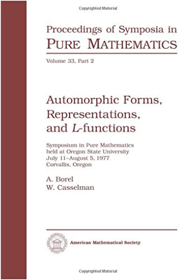
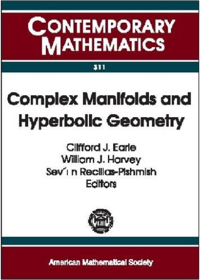

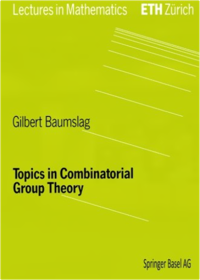
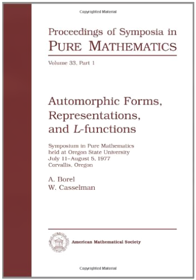


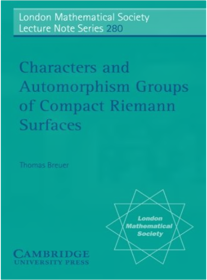

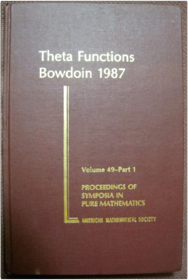
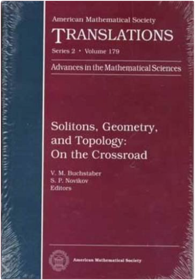
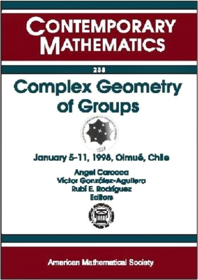
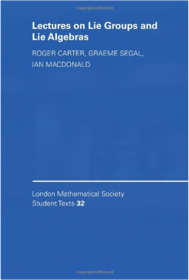
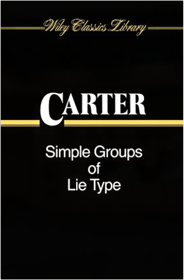
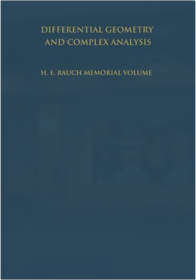

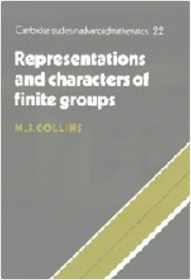
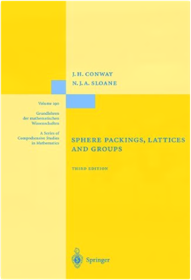

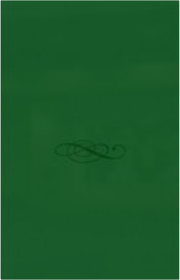
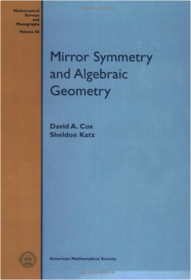

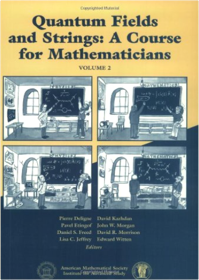

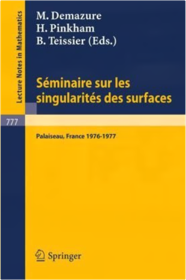
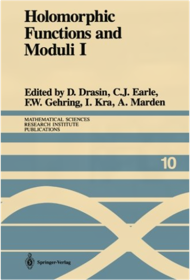
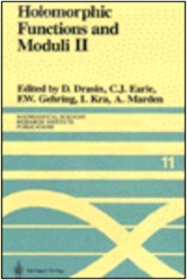
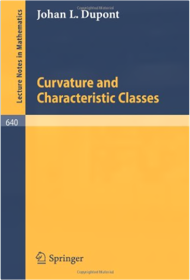

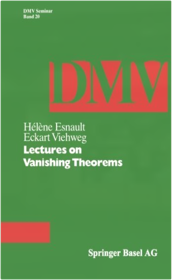

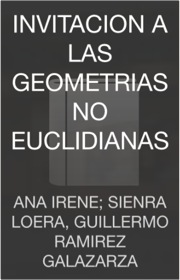
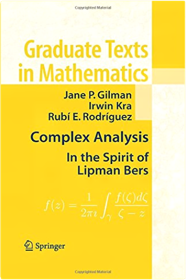

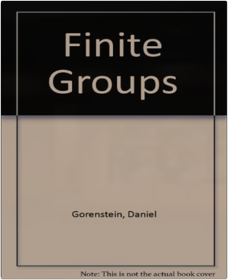
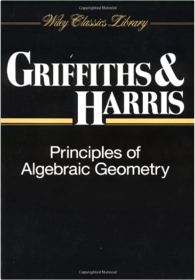
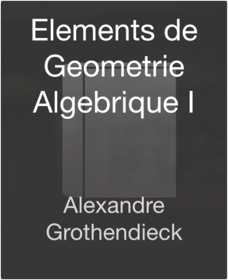
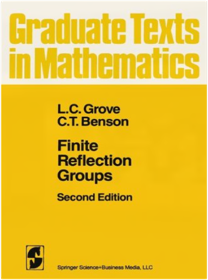
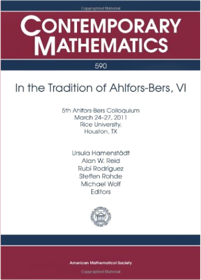


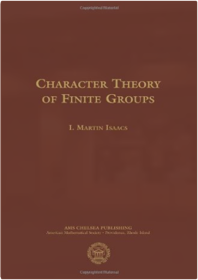
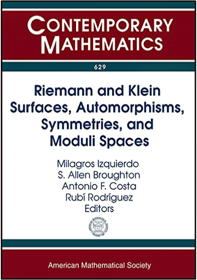


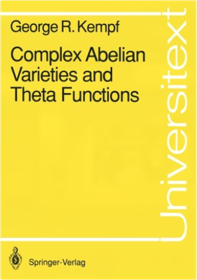

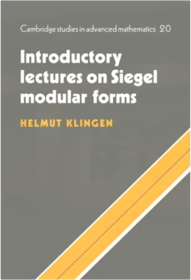
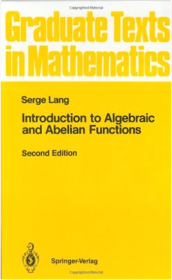
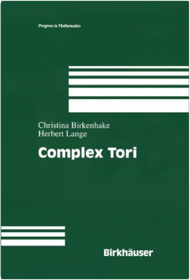


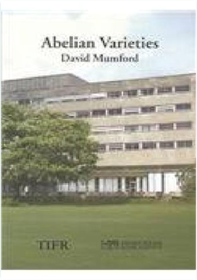
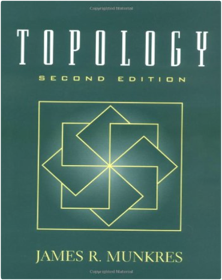
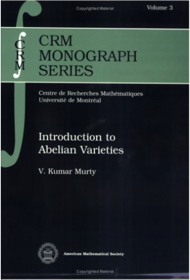

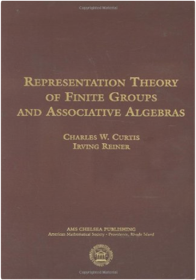
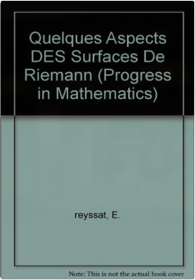
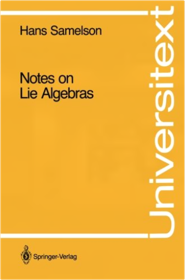
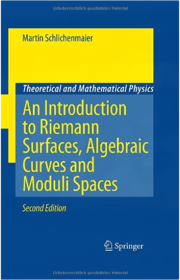
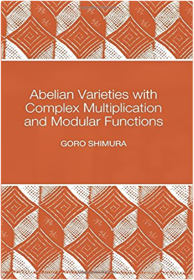

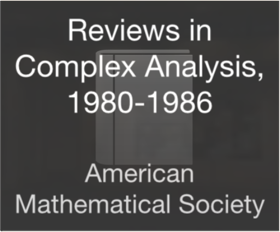



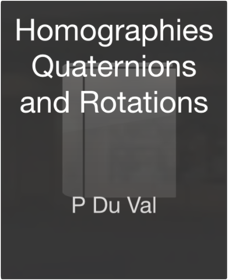
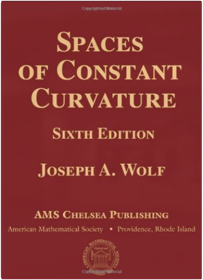


 Made with Delicious Library
Made with Delicious Library